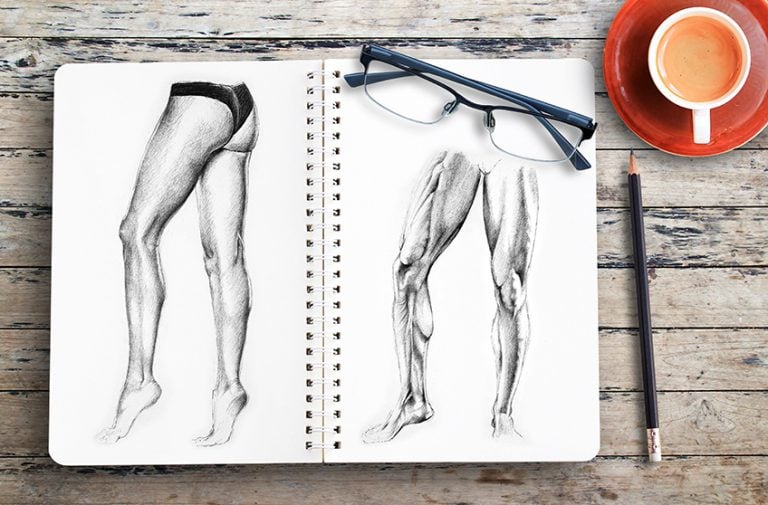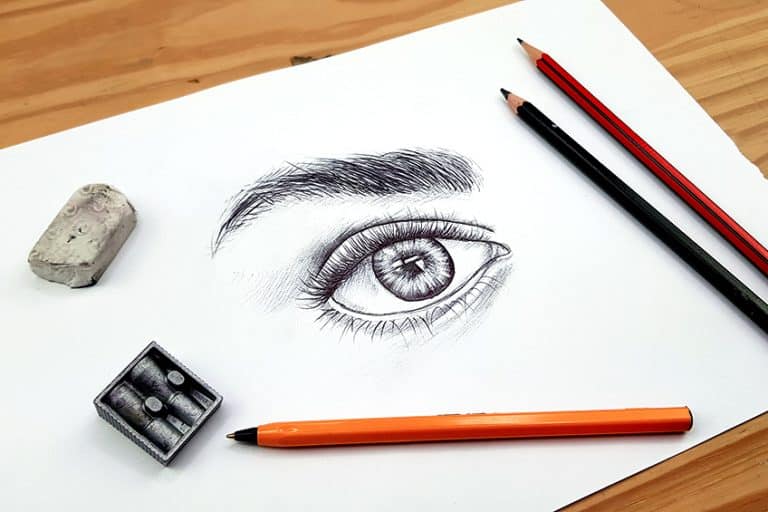How to Draw a Standing Pose – Essential Drawing Techniques
A body pose drawing is a great exercise for understanding the structure of the human form and how it can position itself for stability. Standing poses are perhaps the most common and help us understand the unique subtle shapes in the body that stabilize the body in different standing poses. This is also just a great drawing exercise to understand human anatomy and how the different body parts work together in a standing pose drawing. With standing poses, we also build up our repertoire of different standing poses that can be utilized within various character designs. There is a lot to learn from a standing pose drawing, from structure to shadow formation, that enhances our drawing skills and understanding of human anatomy.
Step-by-Step Tutorial on How to Draw a Standing Pose
In this tutorial on how to draw a standing pose, we will be working with the female figure as a reference. We will first break down the fundamental proportions of the figure and how to assemble the figure in its various shapes in a basic pose.
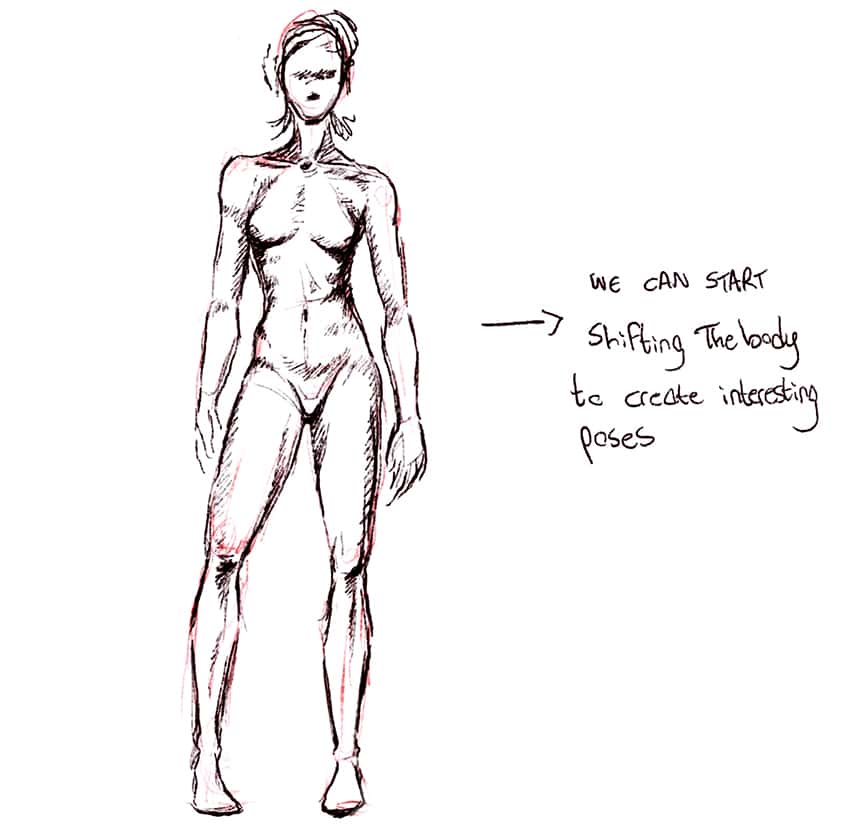
From there we will look at some other standing poses, where we build up these figures in their various shapes. This will allow us to play around with different standing poses and to see how subtle movements in the body can shift the position of the figure in a unique standing pose drawing. Now that we are prepared, let’s break down the process of drawing a standing pose.
Understanding Fundamental Proportions
For a figure in a standing pose, we want to know how their body is divided into these eight equal segments. The pelvic bone is generally the middle point, in the fourth segment, that divides the body into two halves.

This will determine how the body is stacked with its various features and how large they should be in comparison to one another. From this proportion guide, we can form figures in the standing pose more effectively.

Working With Basic Shapes of the Body
Now that we know the basic proportions, we can then proceed to shape the different body parts within their basic shapes. We can form the body with these simplified shapes to understand the standing pose.

Forming a figure with basic shapes in its correct portions is a great way to understand the basic structure of how the body is stacked within a standing pose.
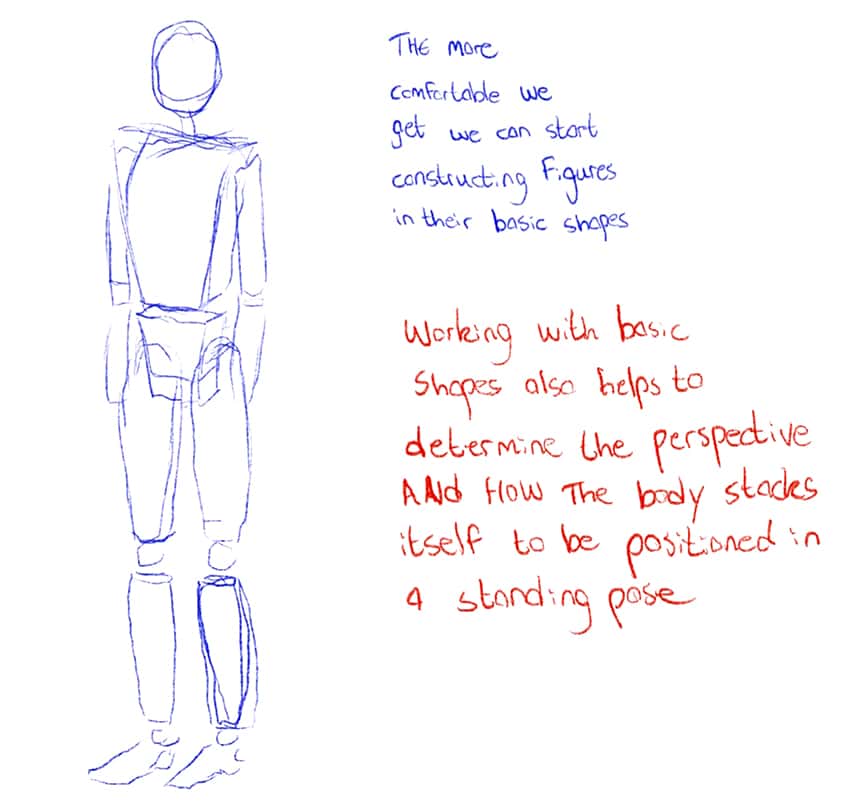
From this point, we can work with the basic shapes to refine the outline of the figure and refine the features of the body.
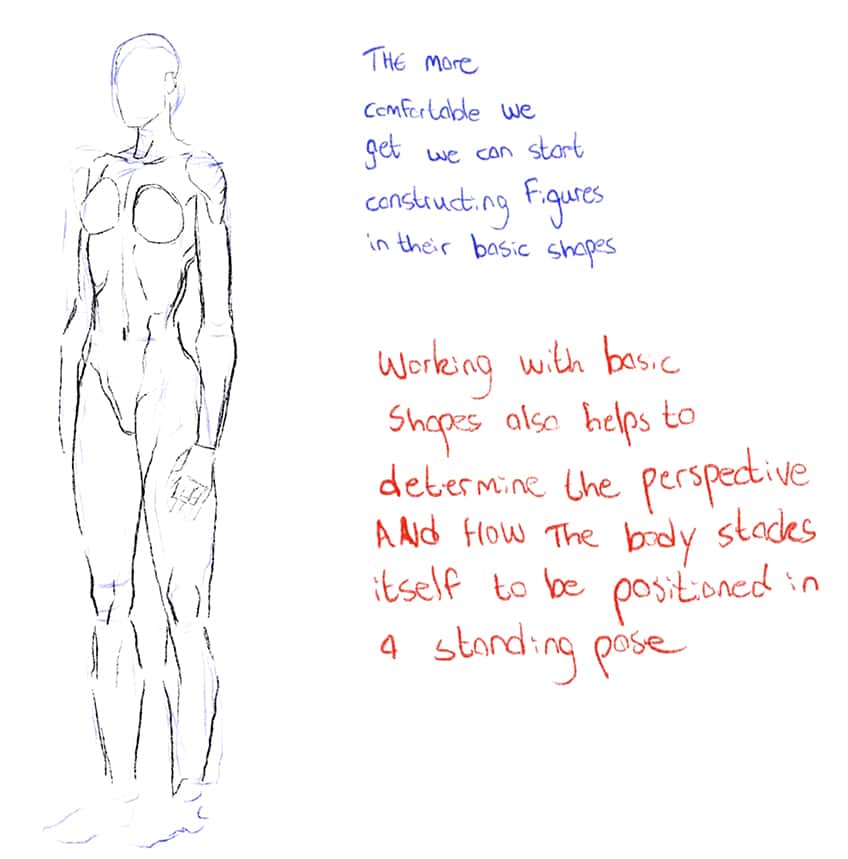
We can use those basic shapes to determine the scale and shape of the different anatomical features within the body pose drawing. Slowly, you can refine the features more and more, breaking down how the various anatomical features are placed together within a standing pose drawing.

Exploring Unique Standing Poses
A good suggestion is to look at a few person-standing references to assist you with unique poses. However, the process is the same, where we start with the basic skeletal frame and shapes.
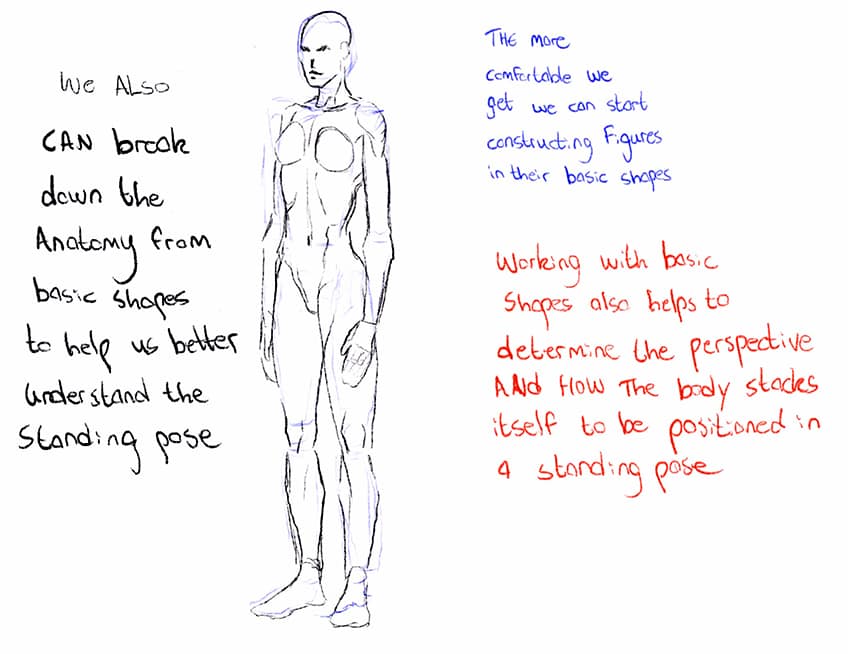
Once again, working with the right proportions and shapes can help us shape the figure in its most fundamental formation within a body pose drawing.

Once we establish the basic structure of the figure within its unique pose, we can then proceed to erase the figure as we prepare to refine the details of the body. Slowly, we can start forming an outline to define the various features and how they are placed together within a unique standing pose.

There are many standing poses for drawing to explore on the internet for inspiration. It’s always good to build; up your basics by looking at standing pose references as you learn how to draw a standing pose.

As we continue to refine the structure, this is where we can integrate more dimensions through the process of shading. By doing this, we can enhance the overall visual quality of the figure and how its three-dimensional qualities are defined with shading in a standing pose drawing.
Understanding Tilting in the Hips for a Standing Pose Drawing
As we get more comfortable with shaping the figure in its basic shapes, we can pay close attention to the hips as a feature that can shift the weight of the standing pose.

The hips are a unique structure, as it can cause one of the legs to lower and one to be slightly elevated, causing this resting pose on a single leg within a standing pose drawing.

As we form the tilt within the hips, we can start shaping the anatomy outline of the figure around the tilting skeletal structure. We can see how it starts to define a more dynamic standing pose drawing.
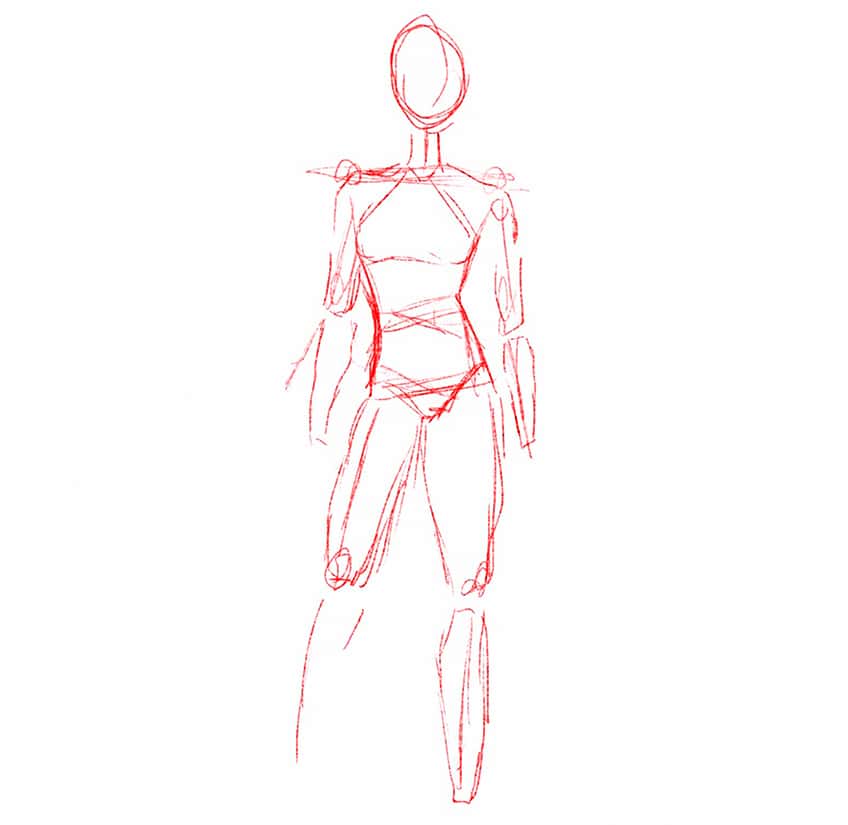
Once you have established the basic outline of the figure, you can then proceed to lightly erase the figure as we proceed to refine the details. As we continue to refine the details, we want to maintain the correct proportions as we form the features within the unique dynamic standing pose.

We see how the simple tilting action in the hips shifts the weight onto one leg, causing the other features of the body to be positioned interestingly.
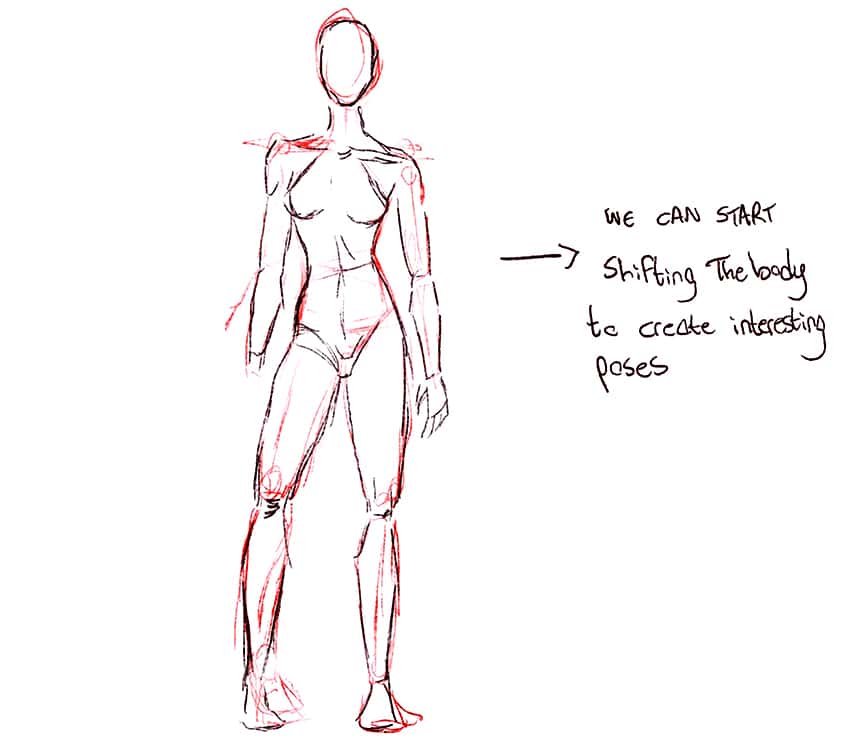
This type of standing pose is a great way to create unique movement and personality for character designs and fashion sketches.
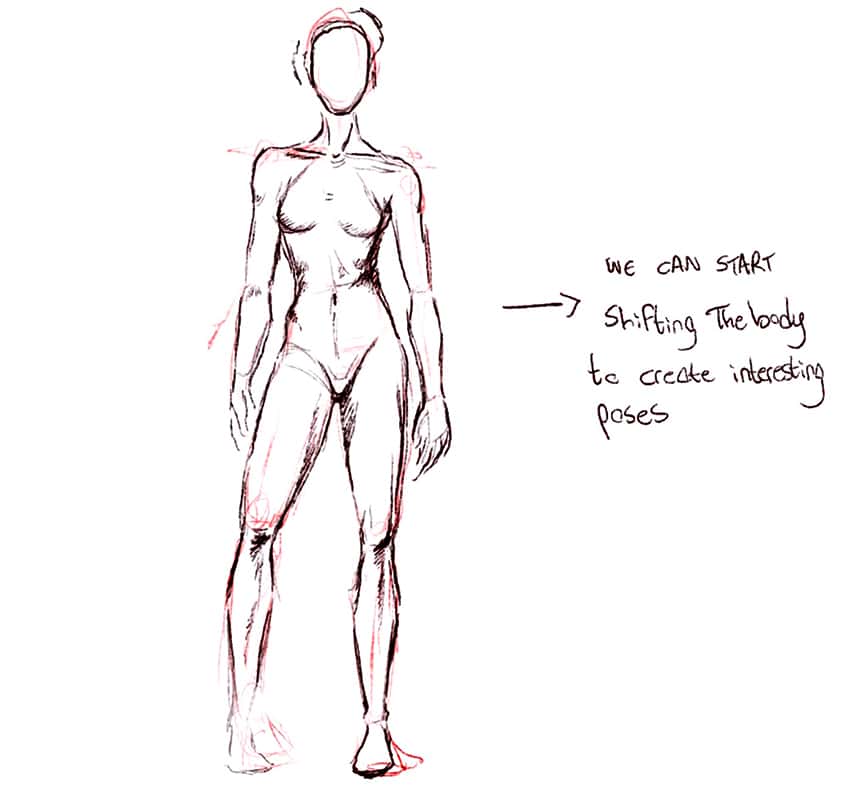
From here on, we can then move forward by focusing more on details, shading, and linework to enhance the standing pose drawing.

With a standing pose drawing, it’s simply a matter of building upon the figure within layers, from skeletal structure to refined details.
Understanding a Side-Standing Pose
Once you have the hang of the basic proportions, consider challenging yourself with interesting standing poses for drawing. There are a lot of great person-standing references that define standing poses from side angles.

Side poses are interesting because we follow the same process of constructing the figure within the basic layers, from skeletal structure to refined details, but we are working with a more linear perspective.
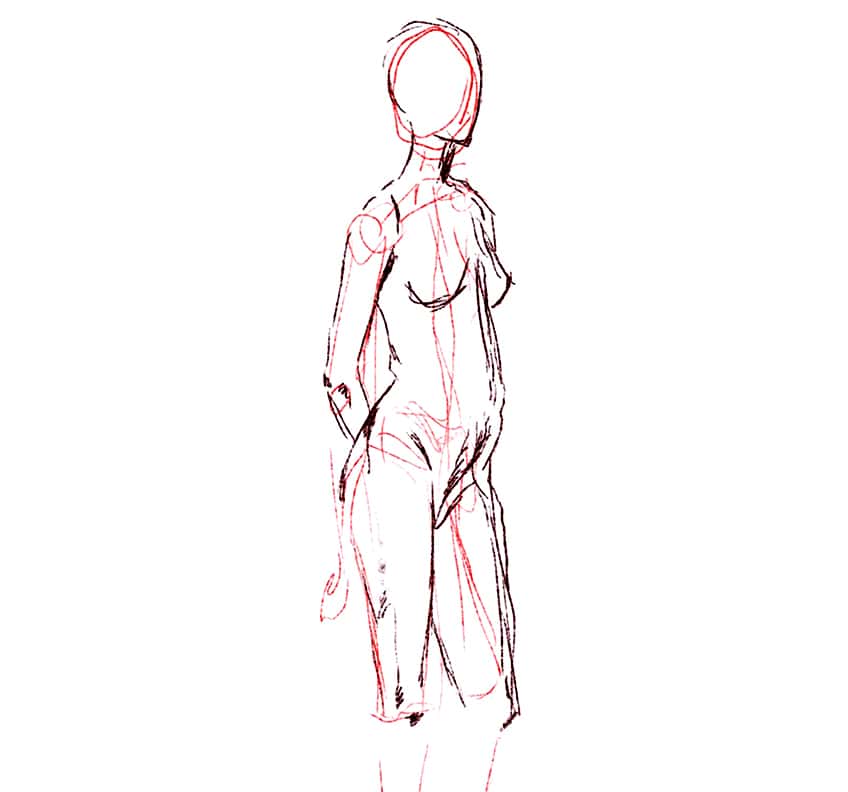
This means that one side of the figure is more prominent, causing this unique perspective where we explore features in the foreground and background.

However, the intention is always the same, always build up the basic skeletal frame with the correct proportions and then proceed to build the basic shapes around the figure. The more time you take with each layering quality in the standing pose drawing, the more realistic the result will be. In the case of unique perspectives, shading becomes integral as a tool to enhance the quality of depth between features in the foreground and background.

The use of shading is a great way to enhance a standing pose, as it can define how the different muscles and bones are working together in the body to stack the figure in a unique standing pose.

Ultimately, it’s a matter of understanding the basics, slowly building up the figure regardless of the unique standing pose, and just being patient as you take your time.

Tips and Tricks to Remember
- First, understand basic proportions. Look at a few standing pose references to understand basic proportions, you can then construct a figure in a body pose drawing more effectively.
- Understand the basic shapes in the figure. You want to know how large the different features are in comparison to one another as you explore unique standing poses.
- Work with layering your figure. You always want to build up the frame from skeletal structure to body outline, and then lastly to detailed features in the standing pose drawing.
- Work with a shadow to emphasize the pose. Shading is the last detail that can ultimately enhance the figure within the standing pose drawing.

As we learn how to draw a standing pose, we are also learning about the female form and how to construct the female figure in a basic position. By doing this, we break down the different body parts and see how they are formed in different shapes, and placed together to form unique standing pose drawings. Seek out various standing pose references to assist you in the drawing process.
Frequently Asked Questions
How to Draw Legs in a Standing Pose?
There are many ways to consider the legs in standing poses for drawings. In this tutorial, we look at a few angles and positions. The idea is to understand the basic proportions and mechanics of the skeletal structure within a standing pose. From there, you can form the anatomy around the skeletal structure to accurately represent unique standing poses. For instance, when the hips are tilted, this causes one of the legs to be positioned slightly lower as it holds more weight of the body. Again, we just want to make sure we form the figure in its basic skeletal frame, making sure the proportions are to scale between the top and bottom halves of the body. From there, we can explore variation in the movement of the body, and how this can affect different stances within the legs.
How to Draw Dynamic Standing Poses?
The hips play a major role within the unique positions of different standing poses because of their tilting ability. The mobility in the hips allows for the legs to shift from back to forth, but also slightly upward and downward. The intention is to understand how to construct the figure in its basic skeletal frame, in which we can shape the frame to suit unique poses. This is where we position the torso and hips in a way to suits the up-and-down or back-and-forth movement in the hips. From there, it is a matter of shaping the anatomy around the frame to achieve the intended standing pose.
Matthew Matthysen is an educated multidisciplinary artist and illustrator. He successfully completed his art degree at the University of Witwatersrand in South Africa, majoring in art history and contemporary drawing. The focus of his thesis was to explore the philosophical implications of the macro and micro-universe on the human experience. Matthew uses diverse media, such as written and hands-on components, to explore various approaches that are on the border between philosophy and science.
Matthew organized various exhibitions before and during his years as a student and is still passionate about doing so today. He currently works as a freelance artist and writer in various fields. He also has a permanent position at a renowned online gallery (ArtGazette) where he produces various works on commission. As a freelance artist, he creates several series and successfully sells them to galleries and collectors. He loves to use his work and skills in various fields of interest.
Matthew has been creating drawing and painting tutorials since the relaunch in 2020. Through his involvement with artincontext.org, he has been able to deepen his knowledge of various painting mediums. For example, watercolor techniques, calligraphy and lately digital drawing, which is becoming more and more popular.
Learn more about Matthew Matthysen and the Art in Context Team.
Cite this Article
Matthew, Matthysen, “How to Draw a Standing Pose – Essential Drawing Techniques.” Art in Context. April 10, 2024. URL: https://artincontext.org/how-to-draw-a-standing-pose/
Matthysen, M. (2024, 10 April). How to Draw a Standing Pose – Essential Drawing Techniques. Art in Context. https://artincontext.org/how-to-draw-a-standing-pose/
Matthysen, Matthew. “How to Draw a Standing Pose – Essential Drawing Techniques.” Art in Context, April 10, 2024. https://artincontext.org/how-to-draw-a-standing-pose/.



